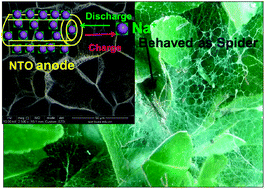Three-dimensional spider-web architecture assembled from Na2Ti3O7 nanotubes as a high performance anode for a sodium-ion battery†
Abstract
A Na2Ti3O7 nanotube-assembled three-dimensional spider-web architecture is synthesized using a hydrothermal method. The self-similar network architecture exhibits an excellent performance as an anode for a room temperature sodium ion battery without any additives (e.g. binder, conducting agent) for the first time.


 Please wait while we load your content...
Please wait while we load your content...